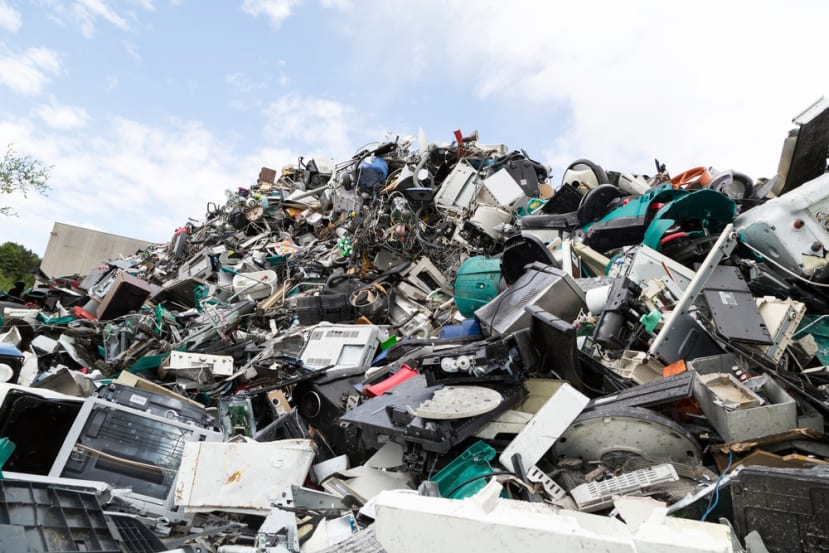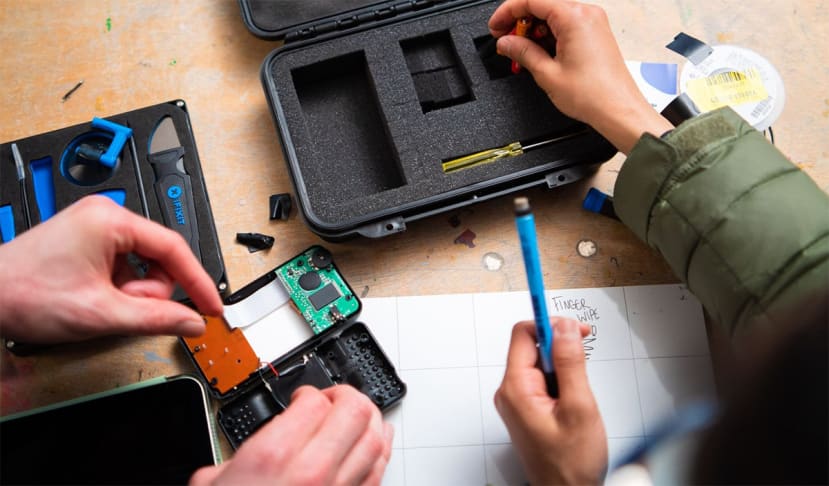Is it time to stop buying and start repairing our tech?
Follow articleHow do you feel about this article? Help us to provide better content for you.
Thank you! Your feedback has been received.
There was a problem submitting your feedback, please try again later.
What do you think of this article?
It seems that environmental and social responsibility is at the forefront of everyone’s minds these days, so it’s a sobering thought to find out that around 50 million tons[1], (yes, you read that right), of e-waste (electronic waste) is generated globally every year – that’s more than the weight of all the commercial airplanes ever made. What’s more, if we do nothing to change this we could be looking at double that figure by 2050.
So, how do you think the UK fares with the management of e-waste? Champion for the cause? There are no laurels to sit on, because disappointingly, the UK is one of the highest e-waste culprits per person in the world, with households and businesses producing 1.45 million tonnes per year[2].
What is e-waste?
According to the UK’s Natural History Museum[3], e-waste includes anything that has plugs, cords and electronic components, such as televisions, computers, mobile phones and home appliances like air conditioners to children’s toys.
We live in a throwaway society where in our desire to own the latest gadget or most recent model, we simply discard the old one, sending it to the ever-growing landfills and recycling centres. So, why do we do it? Why can’t we repair? Or is it simply, we’ve become too materialistic or lazy to care anymore?
There are certain arguments as to why we don’t consider the repair option:
- Manufacturer designs make it hard to repair.
- The price point is such that it’s simply not worth the effort vs renewing.
- There’s no real incentive.
- Lack of confidence/skillset to tackle repairs.
- Lack of information to consumers on what can be repaired.
Why then should we care?
It’s not just the environmental impact that e-waste poses a threat to, there’s also the risk to public health.
Not all disposal methods are equal and e-waste sent straight to landfills can release harmful toxins into the environment. Other methods such as open-air burning and acid baths, which are used to recover valuable materials from electronic components, can expose workers to high levels of lead, mercury, beryllium, thallium, cadmium and arsenic – the list is not exhausted by any means – which could lead to health concerns including cancers, miscarriages and deteriorating IQs[4]. At particular risk are children and pregnant women, where exposure to contaminants released through e-waste has been linked to neonatal problems and learning difficulties[5]. Worrying by any standards.
Then, of course, there’s the environmental implications. A lot of e-waste represents the loss of valuable raw materials such as lithium (used in electric car batteries), indium (flat-screen TVs) and cobalt (laptops, smartphones and batteries). Recycling these metals would prove to be up to ten times more efficient than traditional smelting from ore, producing up to 80% less CO² emissions, than mining from the ground[6].
Is it too late to repair our future?
Not if we put our minds to it. There are lots of considerations when looking at recycling e-waste, but for starters here is some thoughts as to why it’s important[7]:
- We need to keep e-waste out of our landfills. We’ve mentioned the contamination to both environment and public health, there’s also the space it will save in the landfills themselves if we recycle more – remember, over 50 million tons are generated each year globally!
- Think of all the valuable raw materials found in electronic components that are discarded. We’re talking about precious metals such as gold, silver, platinum, copper, aluminium, as well as other materials like plastic and glass. The effort to reclaim and recycle these precious metals and increasingly rare elements has got to be more beneficial than extracting from an original source.
- Reclaiming and recycling valuable materials will lead to a decrease in demand for new raw materials, which in turn will help to save our natural resources. Did you know that a metric ton of circuit boards contains 800 times more gold than that mined from a metric ton of ore?
- It can help reduce greenhouse gas emissions created through the manufacturing process for new products.
- E-waste could be recycled and donated to a worthy cause. Organisations and communities could benefit, as well as helping to keep e-waste out of our landfills.
Changing our mindset
In an ideal world, this would happen automatically, but as is often the case something else needs to change – namely, our mindset towards repairing and recycling. There are some real crusaders out there, organisations and groups that are endeavouring to educate the next generation and people in general to think more about repairing items, providing skills and tools to encourage this.
Two such organisations are mentioned in our DesignSpark podcast - Mission Responsible: Mission 1 - Repair
Firstly, there’s Team Repair, a company founded by a group of engineers who graduated from Imperial College London. Their goal is to try and encourage the future generation to look at repairing, rather than replacing. Their programme involves sending children real electronic gadgets, such as game consoles or radio-controlled cars, sourced as e-waste, which have had faults designed into them as a challenge to repair. By discovering how the components work they encourage curiosity and arm them with valuable skills, including STEM to ignite the ‘repair’ spark. Packaged as a fun and engaging activity, this circular subscription service is just one example of trying to reduce e-waste and nurture an interest in STEM-related careers to carry it through to the future.
Image - Team Repair
Another great organisation doing its bit for the right to reduce e-waste and encourage repair is The Restart Project. They recognise that products can appear to be hard to fix and it’s often easier for people to discard and renew. They want to break that cycle and rejuvenate the skills needed to repair. By helping to run events in the community, they invite people to come along and teach each other how to repair their broken gadgets, from iPhones to tablets. They’ve also compiled directories to signpost where others can find help near them. Supporting the right to repair globally, the data collected from the fixes undertaken provide feedback to champion the cause for changes in design and rules with governments and manufacturers, pushing to reduce e-waste.
Image - The Restart Project
This leads on quite nicely to Jude Pullen’s weekly vlog on DesignSpark, ‘The Fight to Repair’, which is worth a read.
E-waste is a real challenge, we hope this has given you food for thought because it’s something we can all play a part in managing. Your mission – if you choose to accept it…
Check out our Podcast here - Mission Responsible: Mission 1 - Repair
Sources:
[1] E-Waste in 2024: governance and policy | DW Observatory (dig.watch)
[2] UK electrical waste mountain growing - BBC News
[3] https://www.nhm.ac.uk/discover/what-is-ewaste-and-what-can-we-do-about-it.html
[4] The Growing Environmental Risks of E-Waste – Geneva Environment Network
[5] https://www.who.int/news-room/fact-sheets/detail/electronic-waste-(e-waste)
[6] The Growing Environmental Risks of E-Waste – Geneva Environment Network
[7] Five Reasons Why E-Waste Recycling is Important | Scrapware
We would like to credit 'Chris Armstrong' as the researcher for this article.








Comments